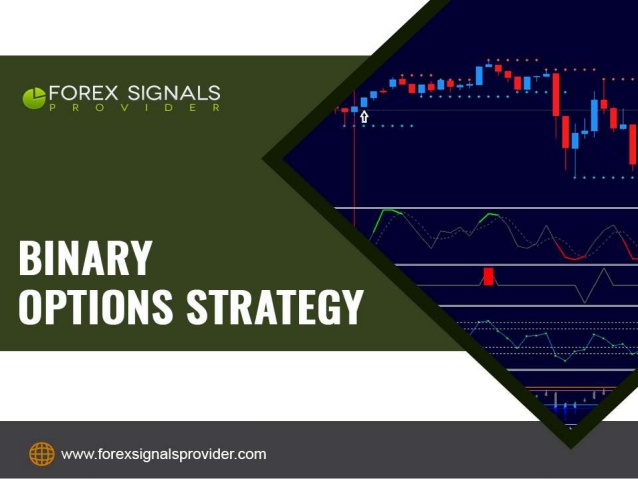
However, as more and more arbitrageurs attempt to replicate these no-risk or low-risk events, these opportunities disappear, leading to a convergence of prices. For this reason, arbitrage is not only legal in the United States (and most developed countries), but also beneficial to the markets as a whole and conducive towards overall market efficiency. The target company’s price rarely matches the deal price, however, it often trades at a slight discount. Deals can fail for several reasons, including changing market conditions or a refusal of the deal by regulatory bodies, such as the Federal Trade Commission (FTC) or Department of Justice (DOJ). Arbitrage is one alternative investment strategy that can prove exceptionally profitable when leveraged by a sophisticated investor. To effectively include arbitrage in your alternative investment strategy, it’s critical to understand the nuances and risks involved.

Let’s say an individual owns stock in Company ABC, listed on Canada’s TSX, that is trading at $10.00 CAD. A trader could purchase shares on the NYSE for $8.00 USD and sell shares on the TSX for $10.00 CAD. Arbitrage usually involves making multiple transactions and using very large amounts of money to get a meaningful return, making it an expensive approach to investing. While markets rarely operate as efficiently as they might in the ideal world of theory, price differences typically are small, and arbitrage opportunities disappear almost as rapidly as they are discovered.
Benefits of Riskless Arbitrage Copied Copy To Clipboard
Many of you may be wondering where you can find these accessible arbitrage opportunities. The fact is much of the information can be attained with tools that are available to everyone. Brokers typically provide newswire services that allow you to view news the second it comes out. Level II trading is also an option for https://1investing.in/ individual traders and can give you an edge. Finally, screening software can help you locate undervalued securities (that have appropriate price/book ratio, PEG ratio, etc.). Which positions the investor takes and the ratio of buys and sells depends on whether the investor believes the bond to be fairly priced.
Conducting due diligence on counterparties and monitoring their financial health can help reduce the likelihood of default. To apply the APT model, investors typically use statistical techniques such as regression analysis to estimate the factor sensitivities of an asset. The APT model suggests that the expected return of an asset can be expressed as a linear combination of its sensitivity to different risk factors, with each factor assigned a specific coefficient.
Arbitrage trading is the act of buying a security in one market and simultaneously selling it in another market at a higher price so as to profit from the temporary difference in prices in the two markets. Arbitrage opportunities exist as a result of market inefficiencies, which it both exploits and resolves. In the stock market, traders exploit arbitrage opportunities by purchasing a stock on a foreign stock exchange where the equity’s share price has not yet adjusted for the exchange rate. While investors chase profits in their own market, sometimes an opportunity lies in a different marketplace — The combination of the two is a tactic known as arbitrage.
Forex trading costs
Since arbitrage opportunities tend to start and end very quickly, these seconds can often be the difference between earning and losing. If you’ve ever been on the Las Vegas Strip, you know there are people walking around selling 17 OZ water bottles to thirsty tourists for $1 a piece. This is a very clear example of typical retail arbitrage trading as those people are buying where it is cheap, and selling where it is pricey. The bonds have different interest rates but the issuers are nearly identical—they have a similar track record, boast similar performance, and have similar potential. Therefore, the investor might believe that the interest rates should be equal and can trade accordingly. They can short the bonds with the higher rate, and enter a long position on the undervalued ones.
Crypto Arbitrage Bots Best for Trading Digital Currencies – The Coin Republic
Crypto Arbitrage Bots Best for Trading Digital Currencies.
Posted: Sat, 09 Sep 2023 22:32:00 GMT [source]
Arbitrage trading happens when an identical asset is bought and sold in two contrasting markets to earn a profit from minor discrepancies in listed prices. These value inconsistencies are usually short-lived and corrected quickly – arbitrage strategy exploits these fluctuations. Arbitrage is generally exploited by large financial institutions because it requires copper deposits significant resources to identify the opportunities and execute the trades. They are often performed with the use of complex financial instruments, such as derivative contracts and other forms of synthetic instruments, to find equivalent assets. Derivative trading frequently involves margin trading and a large amount of cash required to execute the trades.
Liquidation Arbitrage
Although the risk-free forms of pure arbitrage are typically unavailable to retail traders, there are several high-probability forms of risk arbitrage that offer retail traders many opportunities to profit. The example of risk arbitrage we saw above demonstrates takeover and merger arbitrage, and it is probably the most common type of arbitrage. It typically involves locating an undervalued company that has been targeted by another company for a takeover bid.
- Both cases contribute to the fair and efficient pricing of the futures markets.
- Much like the foreign exchange market, the cryptocurrency platforms are generally ripe for arbitrage trading.
- By clearing trades through a CCP, arbitrageurs can have greater confidence in the fulfillment of their transactions.
- The cash value of the stock rewards may not be withdrawn for 30 days after the reward is claimed.
- While basic arbitrage trading is theoretically risk-free—you don’t need to be able to see the future to do it right, you just have to be attentive—unexpected market exposure often occurs.
- Market dynamics, sentiment, and behavioral biases can also influence asset prices, which may not be fully captured by the APT framework.
This means that arbitrage involves buying an asset at one price from the first financial institution and then almost instantly selling it to a different institution to profit from the difference in quotes. Before talking about arbitrage in forex trading, it is important to define arbitrage in general. Simply put, arbitrage is a form of trading in which a trader seeks to profit from discrepancies in the prices of identical or related financial instruments. Nevertheless, when it comes to cash-and-carry arbitrage, risks are slightly higher, as traders have to wait and hold the asset for some time before selling it for profit.
Eventually this caused LTCM to fold, and their creditors had to arrange a bail-out. Thus LTCM failed as a fixed income arbitrage fund, although it is unclear what sort of profit was realised by the banks that bailed LTCM out. Arbitrage is an investment strategy in which an investor simultaneously buys and sells an asset in different markets to take advantage of a price difference and generate a profit. While price differences are typically small and short-lived, the returns can be impressive when multiplied by a large volume.
Cryptocurrency Arbitrage Copied Copy To Clipboard
Arbitrage, in its purest form, is defined as the purchase of securities on one market for immediate resale on another market in order to profit from a price discrepancy. While effective, arbitrage is just one tool among many when it comes to alternative investments. If you’re considering a career in alternative investments, it’s important to understand all of the potential strategies you can leverage for your clients, including possible arbitrage opportunities. Taking an online course, such as Alternative Investments, is an excellent means of gaining the knowledge you need to be successful.
A hedging strategy could be to short the acquiring company (Company A) or buy a put option on Company B, assuming that the premium doesn’t offset the entire potential gain. Popular commodity products West Texas Crude and Brent Crude typically move together also. They are priced differently, so if the typical spread between them narrows or expands, this may present a statistical arbitrage opportunity. Arbitrageurs can contribute to increasing cash flow in the market, or the total amount of liquid money coming in and out of a market.
Arbitrage strategies come in various forms, each with its own unique characteristics and approaches. In this section, we will explore some of the most commonly employed types of arbitrage strategies, providing insights into their definitions, execution methods, and potential benefits and limitations. In this comprehensive article, we will delve into the world of arbitrage, exploring different types of arbitrage strategies and their intricacies. We will discuss the arbitrage pricing theory (APT) and its application in investment decision-making.

Triangular arbitrage follows the basic pattern we’ve seen so far but adds an extra step—and a layer of complexity. It depends heavily on the ability of market prices to return to a historical or predicted normal, commonly referred to as mean reversion. However, two stocks that operate in the same industry can remain uncorrelated for a significant amount of time due to both micro and macro factors. For example, a triangular arbitrage calculator requires the prices from two currency pairs to calculate the fair price of the third.
Who uses arbitrage trading?
I think the SpinCo multiples were fair and that C&S is getting a better than market deal. As consumer facing companies selling necessity products like basic food items, there are many interested parties. Why does a positive relationship between inflation and interest rates give the central bank room to cut rates in the event of an economic slump? Here, one could buy Ethereum on Exchange A and sell it on Exchange B to gain lucrative profits.
This lets traders take advantage of a market opportunity before it becomes widely known, and the markets adjust. Arbitrage traders try to make money by taking advantage of short-term price inequality in the financial markets. They try to find price differences that can happen when the supply and demand on different exchanges differ. Of course, cryptocurrency arbitrage can certainly be profitable; as long as adequate price differences exist (which they certainly do), there will be a way to make money.
- Investors who engage in convertible arbitrage seek to take advantage of the difference between the bond’s conversion price and the current price of the underlying company’s shares.
- Here, one could buy Ethereum on Exchange A and sell it on Exchange B to gain lucrative profits.
- Let’s say the early trades (typically not retail trades) bid it up to $14/share.
- For this reason, arbitrage is generally not a strategy individual investors can leverage for themselves.
- This means that arbitrage involves buying an asset at one price from the first financial institution and then almost instantly selling it to a different institution to profit from the difference in quotes.
Discover the range of markets and learn how they work – with IG Academy’s online course. Assume the interest rate in the U.S. might be 5% per year, whereas the interest rate in the Eurozone is 10% per year. Paul has $100,000 to invest, and if he invested this at home in the U.S., he would earn 5%, bringing his total to $105,000.
If the opportunities are fully explored, the prices of equivalent assets should converge. A trickier example can be found in Forex or currency markets using triangular arbitrage. In this case, the trader converts one currency to another, converts that second currency to a third bank, and finally converts the third currency back to the original currency. All content is published and provided as an information source for investors capable of making their own investment decisions. None of the information offered should be construed to be advice or a recommendation that any particular security, portfolio of securities, transaction, or investment strategy is suitable for any specific person. The information offered is impersonal and not tailored to the investment needs of the specific person.
